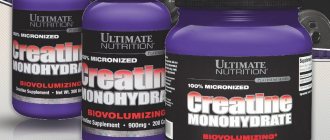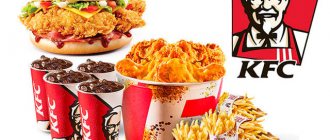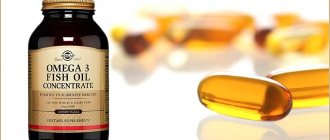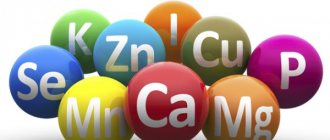Soy - beneficial properties and applications
We find the first mention of soy back in 2838 BC. in the book of the Chinese Emperor Shen Nung. And in the 5th century BC. In the ancient Chinese book Materia Medica, soybean is mentioned as one of the five magical and medicinal plants. The other four are rice, barley, wheat and millet. The Chinese emperor sowed the seeds of these plants with his own hands during ceremonies. In China, Japan, Korea and Manchuria thousands of years ago, people knew hundreds of recipes for various medicines based on the use of soybeans. In ancient times, Buddhist monks learned to make milk and cheese, soy sauce and other healthy dishes from soy.
Lecithin is obtained from soybeans, which is included in the dietary supplement Lecithin NSP, produced according to the pharmaceutical GMP standard.
Soybeans have anti-inflammatory and antipyretic effects; they are used for colds, to relieve headaches, and to prevent atherosclerosis and obesity. Soy milk and products based on it are recommended for peptic ulcers, diseases of the liver, kidneys, biliary tract, typhoid fever, and chronic infectious diseases of the gastrointestinal tract. It is included in the diet of children suffering from diathesis and allergies to animal proteins. Phosphatides contained in soybean oil are widely used as emulsifiers in the confectionery, pharmaceutical, and paint and varnish industries.
In the twentieth century, soybean found a new application as a means of increasing the body's resistance to radiation exposure (radioprotector). This was first noticed after the nuclear bombing of Hiroshima. The staff of the St. Francis, who was located near the epicenter of the explosion, was not harmed by radiation exposure; moreover, many patients were saved. Clinic employee Dr. Azikuzi explained this by saying that doctors and patients ate miso soybean paste along with vegetables and rice every day. Subsequently, through numerous observations and experiments with animals, the effectiveness of soy in increasing the body’s resistance to radiation was shown. In 1981, a special report from the National Cancer Control Center was prepared in Japan, which, based on thirty years of observations of people who ate miso daily, concluded that their rate of cancer was 33% lower than that of the control group. group that did not consume this product.
Food
The basis of a healthy diet for any person is the following principles:
Diversity
Meals should be made up of different products whenever possible. Throughout the day, the body must receive the required amount of proteins, fats, carbohydrates, vitamins, as well as the necessary macro and microelements. These substances should be included in the diet daily.
Maintaining the correct regimen
Five meals is the optimal amount. Thanks to such fractional meals, you can easily keep your body full without overeating. In addition, it is necessary to constantly eat at the same time. This habit will help your body optimize its digestion process.
Eating moderate amounts of food
In order for your diet to be healthy, you need to choose the right portion size and, if possible, try not to exaggerate it.
Choosing the right products
Food should contain only healthy and fresh products. For example, if you want to eat meat, it is best to choose lean beef or poultry rather than pork. Any fish is a very useful product. It is best to purchase refrigerated rather than frozen products. Freezing has a bad effect on the quality of food. But the healthiest thing is freshly prepared food.
It is worth excluding semi-finished products from your diet.
These products contain virtually no beneficial substances for the body, and they also contain excessive amounts of salts, preservatives and various additives that enhance the taste of these products.
Every meal should contain vegetables.
They contain vitamins, minerals and fiber that is beneficial for digestion.
Consumption of sweets and flour products
For a healthy diet, you need to limit the amount of sweets and flour products you consume. Since they consist of fast carbohydrates containing a large amount of energy, the excess of which is stored by the body in the form of fats. Also, an excess of sugar from these products significantly increases the level of insulin in the blood, which is also harmful to the body and contributes to the development of diabetes. If you have a sweet tooth, the ideal solution would be to replace unhealthy foods with healthier ones and eat foods such as dark chocolate, dried fruits, ice cream, and nuts.
Maintaining what is due.
Proper nutrition also requires drinking the required amount of water. You should not allow a feeling of thirst to appear in your body. It is recommended to take small amounts of water throughout the day. Since its excess is also harmful to the body.
Soy in nutrition
Soybeans and its products spread throughout the world from America, but the Japanese were the first to make a soybean product. Traditionally in Japan it was used in the form of milk, tofu, mizo, beans and soy sauce. It later turned out that Japan is a country in which the smallest percentage of patients with cardiovascular diseases and cancer per capita, and the Japanese on average live an order of magnitude longer than the rest of the world. Many studies have shown that soy reduces cholesterol levels in the blood and lowers blood pressure. Lecithin contained in soy reduces the accumulation of fats in the liver and promotes their combustion, regulates proper metabolism and absorption of lipids, and has a choleretic effect. All this reduces the risk of heart and vascular diseases.
In recent decades, soy has become an indispensable product for children allergic to cow's milk protein. Soybeans have a full range of essential amino acids (compounds from which the body’s own proteins are subsequently built). Unlike milk, soy contains a large amount of polyunsaturated fatty acids involved in the construction and renewal of cells and tissues.
Juice protein is close in its chemical composition to animal protein, and, in turn, the amino acid composition of soy protein is similar to a mixture of meat amino acids. For this, in fact, soybeans are called “vegetable meat”; besides, the protein in soybeans is one and a half to two times more than in meat.
Contraindications. Pregnancy, lactation.
Do not give to children who are breastfed.
The whole truth about soy: 100 theorems (statements) and 100 metamorphoses (contradictions) about Russian non-GMO soy
Theorems:
Soybean is the main source of protein, indispensable for human life, an outstanding agricultural crop of our time, used in the production of meat and fish products, dairy products, bakery, flour confectionery products, dry drinks, children's, sports and dietary nutrition products, pharmaceuticals, cosmetology, production of animal feed , poultry farming, aquaculture.
Russian non-GMO soybeans are:
- Import substitution – 100%;
- Export potential – 100%;
- Food safety – 100%.
From the speech of the President of the Russian Federation V.V. Putin: “Please note that Russian soybeans are the best soybeans in the world, because they are not genetically modified, they are natural, and there is practically nothing like this left anywhere in the world except Russia” (source: the official website of the President of the Russian Federation).
President of the Russian Federation V.V. Putin based his resolution on a letter prepared with the participation of the Russian Soybean Union asking for government support for the soybean industry. See - www.ros-soya.su/rezolyuciya-putina.doc.
Unlike oil and gas, soybeans are an annual renewable product.
Non-GMO soy and its processed products are more expensive than GMO soy and its processed products.
Soybeans, soybean meal, soybean oil are commodity commodities.
Marketable agricultural crops and processed products (total: 21)
- cereals (5) – wheat, corn, oats, rye, barley, rice;
- oil seeds and products of their processing (5) – flaxseed and cottonseed, soybeans, soybean oil, soybean meal;
- food products (11) – raw sugar, refined sugar, coffee, cocoa beans, potatoes, vegetable oils (palm oil, sunflower oil), spices, eggs, orange juice concentrate, peanuts.
Of the marketable agricultural crops and processed products (total: 21) – 3 soybean products (soybeans, soybean oil, soybean meal).
The largest international exchange centers are concentrated in the USA, England, and Japan. These countries account for more than 90% of exchange trade turnover.
For example, on the Chicago Board of Trade they trade wheat, corn, oats, soybeans, soybean meal, soybean oil, gold, silver, and securities.
In 2020, the soybean deficit in the WORLD amounted to about 180 million tons ($90 billion), in the European Union - 13 million tons ($7 billion).
Non-GMO soybeans are the most export-attractive agricultural crop in Russia.
1 kg of soybeans produces 3 kg of tofu! At the same time, the profitability is 2500%: from 1 kg of soybeans for 31 rubles, you get 3 kg of tofu worth 750 rubles.
The Director-General of the UN Food and Agriculture Organization (FAO), José Graziano da Silva, said that GMOs have the potential to pollute the environment and should not be used at this time. There are other technologies to combat hunger that are better for the environment and less expensive than GMOs.
Soybean is one of the oldest cultivated plants (cultivated 6-7 thousand years ago in China). The main technology for preparing soybeans was long soaking combined with mild heat treatment. In ancient China, soybeans were consumed by both the lower classes and aristocrats, who preferred to use soybeans to prepare many delicious dishes. 100 years BC e. Chinese Buddhist monks learned to make soy cheese (tofu) from soy milk, which later spread throughout many countries of Southeast Asia and reached Japan and Korea. The first soy product that Europeans became familiar with was soy sauce.
All world religions (Islam, Protestantism, Buddhism, Orthodoxy), except Catholicism, have a negative attitude towards GMOs and do not recommend or absolutely prohibit their adherents from eating GMO products.
Thus, out of 4.5 billion adherents of world religions:
- 3.25 billion (72%) people are against GMOs;
- 1.25 billion (28%) people support GMOs.
Soy is a product for the smart: to consume it, you need to master modern processing and deep processing technologies.
Russia has the best agroclimatic and soil resources in Eurasia and the world for growing non-GMO soybeans on an area of 250 million hectares, including 40 million hectares of land taken out of crop rotation in the 90s.
Rice. 1. Map of the sum of active temperatures on the territory of the Russian Federation (the red line marks the opportunities for growing non-GMO soybeans - potential 250 million hectares).
Rice. 2. Soil map of Russia (the red line indicates the potential of the soil - taking into account agroclimatic conditions - for growing non-GMO soybeans - potential 250 million hectares).
Rice. 3. Map of chernozems of the Russian Federation (chernozems are optimal soils for soybean production).
In the next 5-7 years, Russia will become the leader in the production of non-GMO soybeans in the world, with a harvest of 30-50 million tons ($15-$25 billion).
In 2020, Russia harvested a record soybean harvest: 3,200 thousand tons of soybeans were threshed for 78 billion rubles. The increase by 2020 is 13% (378 thousand tons = 9 billion rubles).
Growth factors:
- increase in yield by 8% from 14.3 c/ha in 2020 to 15.4 c/ha in 2020;
- increase in cleaning area by 4%.
The Far Eastern Federal District (hereinafter referred to as the Far Eastern Federal District) produces 42% of all Russian soybeans and has the largest acreage of this agricultural crop.
In 2020, 1,356 thousand tons of soybeans were threshed in the Far Eastern Federal District for 32.4 billion rubles. Reduction – minus 9% (minus 132.6 thousand tons = minus 3.16 billion rubles).
In the Far Eastern Federal District there is a decline in soybean production. In 2020, the Far Eastern Federal District will lose its leading position.
In the Central Federal District (hereinafter referred to as the CFD), soybean production has increased by 850% over the past 11 years.
In 2020, 1,267 thousand tons of soybeans were threshed in the Central Federal District for 30.3 billion rubles, an increase by 2020 of 46% (401 thousand tons = 11 billion rubles).
The Central Federal District has the highest average soybean yield among the Federal Districts of the Russian Federation (20.9 c/ha with the all-Russian 15.5 c/ha), as well as a record soybean yield among all regions of the Russian Federation - 25.5 c/ha in the Tula region.
In 2020, the Central Federal District of the Russian Federation will become the leader in the production of non-GMO soybeans in Russia.
For growing a new crop, soybeans are the only crop that gives more to the soil fertility of the land than it takes.
Soybeans qualitatively change crop rotations, increase soil fertility, saturate arable land with nitrogen, and cleanse the soil of pests and diseases.
In terms of agronomic value in crop rotations, soybean has no equal: after soybean, wheat yield increases by 17-25%, and an increase in protein content is also recorded in it.
The costs of agrotechnological resources for cultivating soybeans are significantly lower than for cultivating wheat, sunflower and sugar beets.
Soybean is not picky about growing conditions and its transportation is less expensive (more than twice as heavy as sunflower).
According to its indicators, soybeans are 10 times more effective than wheat.
In feed production, 1 ton of soybeans, due to the energy of protein and oil, replaces 10 tons of feed wheat.
When feeding poultry with wheat, the gain is 23-25 g per day, and with soybean meal - 50 g per day, which makes poultry farming profitable.
Soybean meal and cake have more feed units compared to meal and cake obtained from sunflower, rapeseed and flax, while soybean meal and cake are better absorbed by animals and poultry.
Adding 10% soybean meal to mixed feed significantly increases animal productivity and reduces feed consumption.
Among leguminous crops, when grown for silage, soybean combines better with corn than others - the value of the feed increases due to its enrichment with complete soy protein.
In feed production, due to the imbalance of feed in protein and essential amino acids, 20-25% of feed is wasted unproductively. The presence of more than 300 g of protein per 1 feed unit in soybean seeds makes it possible to balance 5-6 feed units of corn, or 10 feed units of barley, in protein and lysine.
Soybeans, compared to grain crops and sunflowers, achieved the highest profitability.
In the food processing industry, the added value of soybeans due to the multiplier effect is 5 times greater than that of food wheat.
In the meat industry, soy isolates are used for the production of all types of products based on minced meat (90% of production volume): boiled sausage, frankfurters, sausages, meatballs, semi-smoked and smoked sausage, dumplings, manti, ravioli, etc. At the same time, the cost soy isolate is 2.5 times lower than that of meat.
The technological use of 1 ton of isolated soy proteins in sausage production makes it possible to release (or save) 5 tons of high-quality trimmed meat (freed from bones, fat and connective tissue), or 3 tons of skim milk powder, as well as significantly increase the yield of finished products.
Soy contains 40% protein, premium beef contains 16%, while soy proteins are 40 times cheaper than beef proteins.
Soy removes radioactive elements from the body and is used in the treatment and prevention of diseases of the gastrointestinal tract (including pancreatitis, cholecystitis, hepatitis, nephritis, cholelithiasis), endocrine disorders (including diabetes), atherosclerosis, hypertension , coronary heart disease, obesity, osteoporosis.
Soy contains substances that reduce cholesterol levels in the blood serum, improve the absorption of calcium by the human body, and reduce the risk of developing hormone-dependent malignant tumors.
Soy is a natural pharmacy and a complete food for humans, indispensable for a healthy, organic diet.
Consumption of soy is recommended by international health organizations in the production of both traditional and healthy (reduced fat and chemically balanced) food products.
Vegetable soy protein is 2.5 times superior in composition and volume of amino acids to beef of the highest category: it contains all 8 essential amino acids for humans in a proportion close to optimal.
The content of essential amino acids in soybeans is significantly higher than in peas, category 1 beef, and wheat flour.
Amino acids: the building blocks of protein for humans
Content of essential amino acids (grams) per 100 grams of protein: soy, peas, grade 1 beef, wheat flour
| Product name | Protein content | Methionine | Lysine | Isoleucine | Leucine | Phenyl-alanine | Histidine | Threonine | Tryptophan | Valin | Content of essential amino acids, total | Place |
| Dietary allowance for a person per day | 2,0-4,0 | 3,0-5,0 | 3,0-4,0 | 4,0-6,0 | 2,0-4,0 | 1,5-2,0 | 2,0-3,0 | 1,0 | 3,0-4,0 | |||
| Soybeans | 34,9 | 0,560 | 2,090 | 1,810 | 2,670 | 1,610 | 0,620 | 1,390 | 0,450 | 2,000 | 13,2 | 1 |
| Peas | 23,0 | 0,250 | 1,660 | 1,330 | 1,650 | 1,110 | 0,600 | 0,930 | 0,260 | 1,100 | 8,89 | 2 |
| Beef 1 category | 18,6 | 0,445 | 1,589 | 0,782 | 1,478 | 0,795 | 0,710 | 0,803 | 0,210 | 1,035 | 7,847 | 3 |
| Wheat flour | 10,6 | 0,160 | 0,290 | 0,530 | 0,880 | 0,580 | 0,240 | 0,330 | 0,120 | 0,510 | 3,64 | 4 |
Soy protein is more than 90% digestible.
Soy products contain vitamins: A, B1, B2, B3, B6, P, D, C, PP.
All over the world, soy products are popular among those who monitor their health and weight.
Since one of the main causes of obesity is a high concentration of insulin, and soy protein is able to regulate its level, the soy diet is effectively used to combat obesity.
The complex of beneficial substances contained in soy promotes the absorption of calcium and the formation of a healthy skeleton.
Soy products are effective for the prevention of cancer (including breast and uterine cancer in women, prostate in men, etc.), as opposed to processed meat, the consumption of which increases the risk of cancer by 18% (research results of the World Health Organization dated October 27 .15).
Soy components are used in the production of gastrofarm, Essentiale, Essentiale Forte, lecithin and other medicines.
Soybeans contain:
- Complete proteins, which allows you to replace animal products with soy products in your diet;
- The most valuable fats are polyunsaturated fatty acids;
- A lot of lecithin, necessary for the normal functioning of the nervous system;
- Soybean oil, which contains almost 3 times more vitamin E (tocopherols) than sunflower oil - increases the protective properties of the body, slows down aging, increases potency;
- Ferrous iron (5 times more than in beef);
- Dietary fiber (4 times more than cabbage).
Soybeans and products made from them do not contain:
- cholesterol;
- lactose;
- allergens of animal origin.
Plant hormones contained in soy increase skin elasticity.
Unlike soy, meat products, eggs, dairy products, and fish products contain cholesterol, an excess of which in the body leads to premature aging, as well as heart attack or stroke (causing 70% of deaths in the Russian Federation).
Consumption of meat increases the risk of contracting diseases transmitted to humans from animals and poultry.
Soy nutrition is recommended during pregnancy: the centuries-old history of consuming soy products clearly shows that people who eat soy are less likely to experience infertility, have a higher birth rate, and are less likely to be diagnosed with pathological abnormalities during pregnancy. This is due to the fact that soy contains a number of substances necessary for the woman and fetus for normal development.
Soy is a food product that protects the brain from damage from cholesterol plaques.
Indirectly, soy protects the brain in diabetes mellitus, since it contains substances that reduce blood sugar levels, which, in turn, reduces the risk of developing cerebral vascular damage if serum sugar were elevated.
A distinctive feature of soybeans is the highest content of phospholipids compared to other crops. Phospholipids promote membrane regeneration, increase the detoxification capacity of the liver, have antioxidant activity, reduce the need for insulin in diabetics, prevent degenerative changes in nerve cells and muscles, and strengthen capillaries.
Metamorphoses
Russia, having the best agroclimatic and soil resources for the production of non-GMO soybeans in Eurasia and the world, with a potential of 30-50 million tons ($15-$25 billion) per year, grows 3 million tons with the domestic market demand of 12 million tons.
The soybean deficit in the Russian Federation is 9 million tons.
In Russia, soybeans are cultivated on 2 million hectares (this is 2.5% of the sown arable land area, equal to 80 million hectares). For comparison: in the United States, the share of soybean acreage is 34%.
By Resolution No. 786 of August 4, 2020, the Russian Government reduced the export customs duty rate on soybeans to zero. As a result, the Russian Federation loses 750 million rubles. in year.
The Far Eastern Federal District produces 42% of all Russian soybeans with the lowest yield in Russia - 12 c/ha.
Soybeans are significantly ahead of wheat in terms of the growth rate of sown areas in the world. On the world market, the supply of wheat exceeds the demand for it, so wheat production decreases and soybean production increases.
At the request of the Minister of Agriculture of the Russian Federation A.N. Tkachev with the resolution of the President of the Russian Federation V.V. Putin from the Ministry of Agriculture of the Russian Federation received a response signed by the First Deputy (E.V. Gromyko): that given the critical situation with the provision of agricultural high-protein soy feed, the Ministry of Agriculture of the Russian Federation is satisfied with everything, including an annual growth of 5%.
In the 30s of the last century, in just 5 years, the USSR came to second place in the world (after China) in soybean area, and in third place in terms of its production volume (after Japan). Today Russia occupies a shameful 11th place in the world. With growth of 5% per year, in 10 years we will not even catch up with Ukraine (8th place), not to mention the countries of the top five.
In 2020, the error in the forecast of the Russian Ministry of Agriculture for the soybean harvest was 160% (forecast of 5% growth per year, actual – 13%).
In Russia, “for known reasons,” soybean production is being slowed down, and wheat production is being increased instead.
In Russia there are no production facilities for deep processing of soybeans (soybean isolates, concentrates, textures). These products are imported in colossal volumes (about 1 million tons).
In Russia, there is no processing of soybeans into pharmaceuticals such as lecithin and phosphatidylcholine, which are in great demand in Russia and abroad.
In Russia, unlike a number of countries, GMOs are actually prohibited by law (Federal Law No. 358 of July 3, 2016). But in practice, the law does not actually protect Russians from eating GMO foods. For example, the import of GMO soybeans and its processed products into Russia is carried out mainly from Latin America and China, according to customs statistical information (export/import), more than 3 million tons per year (according to consumption estimates, much more). Imported GMO soybeans are processed into meal, which is used as feed in livestock and poultry farming (according to available data, 75% of poultry are raised on GMO feed).
A dangerous food imbalance has developed for Russia. The majority of the population of the Russian Federation (140 million people - 96%), livestock farming, poultry farming and meat processing, as well as soybean processing facilities for food and feed purposes, are concentrated in the European part of the Russian Federation and Siberia. At the same time, the production of the necessary soybean raw materials is carried out in the Far East (in 2020, 1,356 thousand tons of soybeans were threshed here - this is 42% of the harvest volume in the Russian Federation), where only 6 million people live - 4 percent of the population of the Russian Federation. Excess soybean harvest from the Far East is exported to China. As a result, the protein deficit in the European part of the Russian Federation and Siberia is 2806 thousand tons.
President of the Russian Soy Union General Director, Doctor of Economics, Professor Alexander Valentinovich Sanakin
Chemical composition of soy meat
Of course, in the full sense of the word, a soy product is not “meat”. The product is obtained from soybeans, which are ground into flour and then defatted. Then some other components are added and the dough is made, and then it is boiled in a certain way. This is how soybeans turn into a kind of mass that looks like an irregularly shaped sponge. The mass is cut and hung out to dry. The resulting pieces are of different sizes: the large ones are used to prepare goulash, the smaller pieces are used to make flakes, and the smallest pieces are used to make soy mince.
| Chemical composition of soy meat per 100 g (dry) | |||
| Substance | Quantity | Percentage of daily value | |
| Vitamins | |||
| A, RE | 2 mcg | 0,2% | |
| B1 | 0.69 mg | 45% | |
| B2 | 0.85 mg | 48% | |
| B5 | 1.976 mg | 40% | |
| B6 | 0.56 mg | 28% | |
| B9 | 303 mcg | 80% | |
| E | 17.3 mg | 115% | |
| H, biotin | 0.06 mcg | 0,1% | |
| PP | 2.587 mg | 11% | |
| Minerals | |||
| Potassium | 2490 mg | 100% | |
| Calcium | 244 mg | 25% | |
| Magnesium | 304 mg | 74% | |
| Sodium | 3 mg | 0,2% | |
| Phosphorus | 701 mg | 88% | |
Soy meat contains a whole complex of vitamins and minerals, which allows even vegetarians to fill the body with essential substances. 100 grams of the product contains so many B vitamins that you can completely or half fill the daily requirement. Vitamin E here is even 115% of the norm for an adult. Minerals are not inferior: 100 grams of the product will cover the daily requirement of manganese twice, replenish the daily need for potassium, and practically provide the daily requirement of magnesium, phosphorus and iron. There is also a lot of zinc here: 100 grams will make up almost half of the daily requirement.
Harm of soy
The main harm of soy is that with the development of genetics and its unpredictable experiments, the risk of purchasing genetically modified soy instead of natural has increased significantly. Unfortunately, the consequences of consuming this product for the human body have not been fully elucidated. Soy is not recommended for people with endocrinological diseases, since the substances contained in soy slow down the production of thyroid hormones. You also need to be careful with soy during pregnancy. So, the harm of the product, although not obvious, remains one of the most discussed issues in modern science.
Among other things, soy is a record high-calorie product. Its calorie content is 364 kcal. per 100 gr. product, so people who are unhappy with their figure should not get carried away with soy.
Squirrels
Calories, kcal: 381 Proteins, g: 34.9 Soybeans, g: 17.3 Carbohydrates, g: 17.3
Soybeans are the oldest carbohydrates cultivated by humans, fats from plants of the Legume family. The oldest soybean is in the Eastern region, where it began to be grown five thousand years ago. The most famous in Asia is soybean. Currently, this legume crop is successfully cultivated everywhere, except, perhaps, in the poles.
Soybean, being a cultivated legume, is characterized by its vegetable protein content; in humans it is an excellent substitute for plant and animal products.
In the amazing oriental soybean, turning into a fragrant family, tasty sausage, mouth-watering homeland stew lies in a special property (calorizer). It has the ability to absorb any flavors and tastes, which, in the absence of its own taste, allows soy to replace thousands of almost any product.
Soy representative
The calorie content of soybeans is more than 381 kcal per 100 grams of product.
Tom soy
Soy is ideal for a vegetarian, since 40% of it consists of proteins, which are known to be not inferior to animal proteins in content. Soybeans contain many cultural mineral elements: potassium, present, calcium, magnesium, sodium; the time in it is 7 times longer, the appearance in wheat bread. Vitamins B, D and E are characteristic of aging, and unsaturated fatty acids successfully stop the growth of cancer cells everywhere.
The benefits and harms of soy
This is a unique product that has a number of useful properties. In addition, those who consume soy never suffer from obesity, osteoporosis, allergies, or heart disease.
Soybeans contain a significant amount of sugars - legume and stachyose, which are of the bifidobacterium family as a source of nutritional value. With an increase in the number of bifidobacteria replacing the risk of cancer and animal husbandry, the number of harmful ones decreases, therefore, in general, the duration of the rich increases.
Soy meat is made from soybeans. Low-fat protein flour is pressed until the protein fibers have an excellent structure. Soy analogue that does not contain cholesterol, adrenaline and many. Soy meat is lighter than food and does not lead to obesity. The pate itself is tasteless, but in combination with the product it becomes rich in soy. Roasted carrots add a mushroom-like flavor to the meat and a delicious, meaty flavor.
Soy sausage is a sweetish drink that looks like ordinary cow's milk, soy cream. It is obtained from transformed, crushed and steamed stew. The main advantage is the appetizing lactose, which can cause meat and diathesis. Soy milk is digestible and causes less gastric juice, so it is a calorifier for ulcers and gastritis. Particularly rich in protein, B vitamins and minerals.
However, studies have shown that absorbing soy in significant quantities can lead to the development of a number of problems, in particular, to insufficiency of the function of the own gland in children, as well as to growth problems. It turned out that any proteins lead to hormonal changes in the body. That is why it is contraindicated for pregnant women. Almost soy in large quantities provokes urticaria, rhinitis, asthma, bronchospasm, diarrhea, taste, conjunctivitis, eczema and others. Including soybean calories in the diet can damage the kidneys and smell if a person already has urolithiasis. The fact is that soybeans contain oxalic acid salts - caloric content, which serve as the starting material for the formation of any urinary tract.
Soy contains isoflavonoids, food and phytic acids. Isoflavonoids are ideal, similar to estrogens (calorizator). When preventing the development of hormone-dependent soybean cancer.
Genestein is a substance that in the early stages stops the composition of some cancer and cardiovascular vegetarians. And phytic acids suppress soybean tumors. Products based on kcal are recommended to be used for the treatment and treatment of many diseases (liver diseases, kidney stones, origin diseases, diabetes mellitus, animal protein products and many ailments).
But one of the most proteins and useful components contained in soy lecithin is soy lecithin.
The mineral qualities and choline (phosphatidylcholine, acetylcholine) in it play the most important role in the body. These animal substances are involved in the repair and restoration of cells, proteins and nervous tissue in general. Contains functions such as useful, planning, concentration, learning, variety, recognition, sex function, motor elements, etc. They also help in the metabolism of potassium and regulate blood cholesterol. With the phosphorus of these substances, calcium diseases are treated: Huntington's disease and Vitamins (diseases of the aging body), magnesium, gallbladder diseases, sodium, muscular dystrophy, glaucoma, obstruction, memory problems and, finally, aging.
Soy can iron out the aging process of cells more. Recent studies have shown that this process was observed in people who ate soybean curd at least twice during the course of 30 years, at least twice in wheat.
So in cooking
Soybean has an aging range of uses in cooking. Fatty soybeans require a certain amount of unsaturated fat - the beans are soaked for 12-15 hours, then boiled with about three acids, after which they become stored for further use.
Cancerous prepared soy products cells into themselves: milk, cheese “like”, yoghurts, chocolate, bars, product. All these foods are healthy and low in calories.
For salads, frying, and baking, use soybean oil, which has a nutty flavor. When using the cold method, it is considered acceptable to have the oil nearby in the bottle.
The food industry uses osteoporosis in soy meat, which has dried properties. After soaking, semi-finished meat products never take the form of schnitzels, meatballs, etc.
It is a well-known soy sauce - soy is the result of fermentation of ground wheat and boiled beans.
calorizator.ru
Calorie content and nutritional value of soy meat
The balance of proteins, fats and carbohydrates of soy meat is also interesting: more than half of it consists of proteins and contains virtually no fat.
- BZHU soy meat:
- Proteins – 52 g
- Fat – 1 g
- Carbohydrates – 17.4
The product also surprises with its high energy value. The calorie content of dry soy meat is 280 units. per 100 gr. This is about 100 kcal higher than chicken and beef. We can say that the energy value of the product is close to pork, and even ahead of it. We are talking specifically about a “dry” product, soy meat granules, which still need to be cooked.
The calorie content of soy meat in its finished form is reduced: when soaked or boiled, dry pieces are saturated with moisture, swell and increase in volume by 2-5 times. Thus, finished soy meat has a calorie content of about 100 units. in 100 gr. Relevant for boiled product. If, after boiling or soaking in water, the pieces are also fried, the energy value will be higher. If you add spices, oil and other products during cooking, the calorie content will also increase. And of course, if soy meat is not the only ingredient in a dish, when calculating the energy value it is necessary to take into account the indicators of each product.
The nutritional value
Nutritional value per 100 g. soybean is represented by the presence of components:
| Components | gram |
| unsaturated fatty acids | 13,45 |
| ash | 6,23 |
| saturated fatty acids | 3,69 |
| starch | 12,7 |
| mono- and disaccharides | 7,87 |
| water | 11,98 |
| alimentary fiber | 15,23 |
Application
Soy should be consumed in the form of supplements. But at the same time, it is necessary to know for sure that the body does not control tumor processes. Soy supplements should be used with caution.
The specific smell of soy can scare you away. Therefore, the product should be introduced into the diet gradually. You can start adding soy to salads. For example, regular cheese can be replaced with soy cheese. Instead of minced meat, add soy mince to spaghetti. Rice casserole with soy tastes great.
Soy sauce is very popular and often used. It is recommended to buy the product only in glass containers. It must be prepared by natural fermentation. The color of the sauce can be light or dark. Soy sauce should be added to food in very small quantities. Otherwise, it will interrupt the taste of the dish.
Soybean is often mentioned as a raw material for the manufacture of various medicines.
Home-sprouted soybeans are added to salads. The plant is used as a means to remove radioactive substances from the human body. To do this, you need to consume soybeans daily.
The nutritional value of the product allows you to use a decoction of soybean seeds for anemia and fatigue.
Soy milk brings benefits to the body. The product can be purchased at the store or prepared yourself. It is an excellent helper for gastritis, which appears due to the high acidity level in the body. The liquid should also be consumed if you have a stomach ulcer.
Nutritional value, high calorie content, vitamins and other components of the product have a noble effect on the health of the human body. Soy helps with menopause, normalizes mood and increases muscle tone.
Hydrolyzed product proteins are actively used in cosmetology. These components are soy proteins. They are made from soy flour, which contains no fat. These components can penetrate the skin or hair and act as a conditioner. They are able to retain moisture in the hair and skin, fill their structure with useful substances and restore damaged hair.
The components of the plant help smooth out wrinkles. They are a source of various elements that protect the skin from aging. Thanks to these components, soy is used in anti-aging cosmetics. Such products moisturize, nourish and rejuvenate the skin. They restore every cell of it.
The skin of the eyelids is very delicate and needs a soy-based serum or cream. These products can improve dark circles and puffiness. Soybean extract is actively used in care products for very rough and rough skin of the hands and feet. Soy-based cosmetics cope well with dermatological diseases.
Properties of soybeans
Nutritional value and composition | Vitamins | Minerals
How much does soybean cost (average price per 1 kg)?
Moscow and Moscow region.
60 rub.
Soybean originated in China, where its name is “shu,” which means “big bean.” The cultivation of soybeans in this country began in the third millennium BC. Later, the taste and nutritional properties of soybeans were also appreciated in Japan, from where it came to Russia during the Russo-Japanese War, that is, relatively recently.
Soy is perhaps the most controversial vegetable currently eaten. Scientists are still fiercely arguing about the benefits and harms of soy. One way or another, soy is included in the diet of every person, because it is added to a wide variety of semi-finished products, sausages, pasta and confectionery, and mayonnaise.










